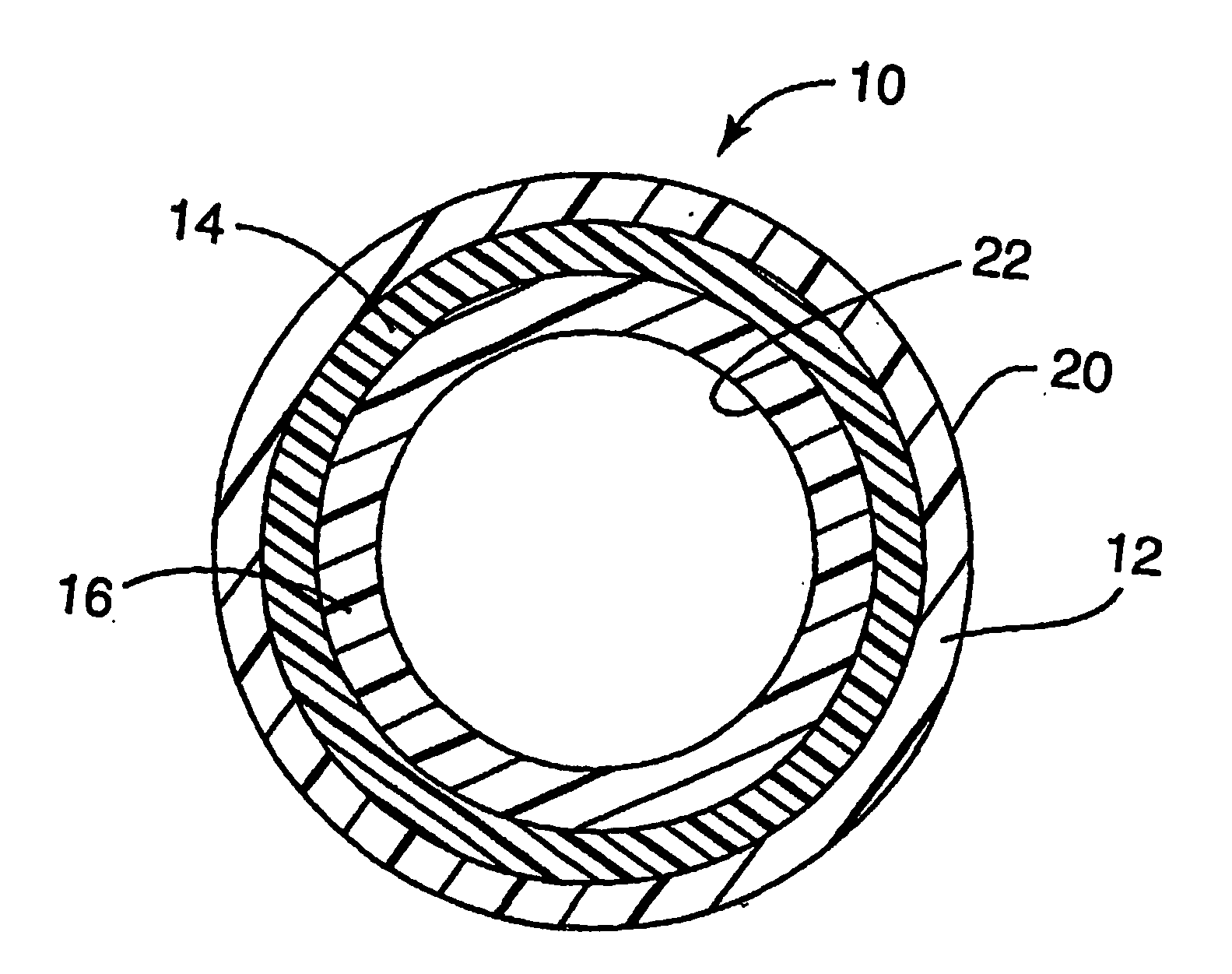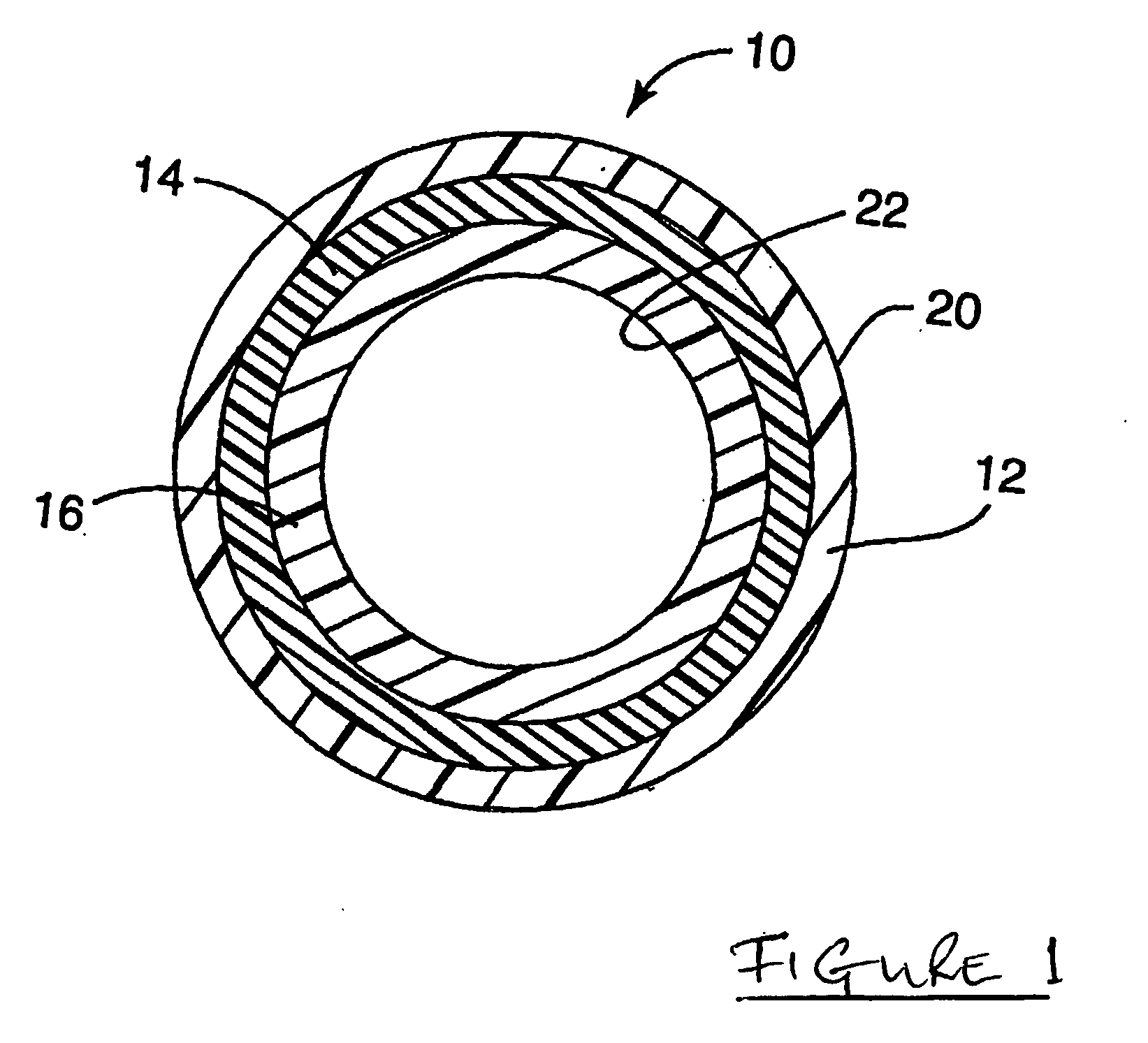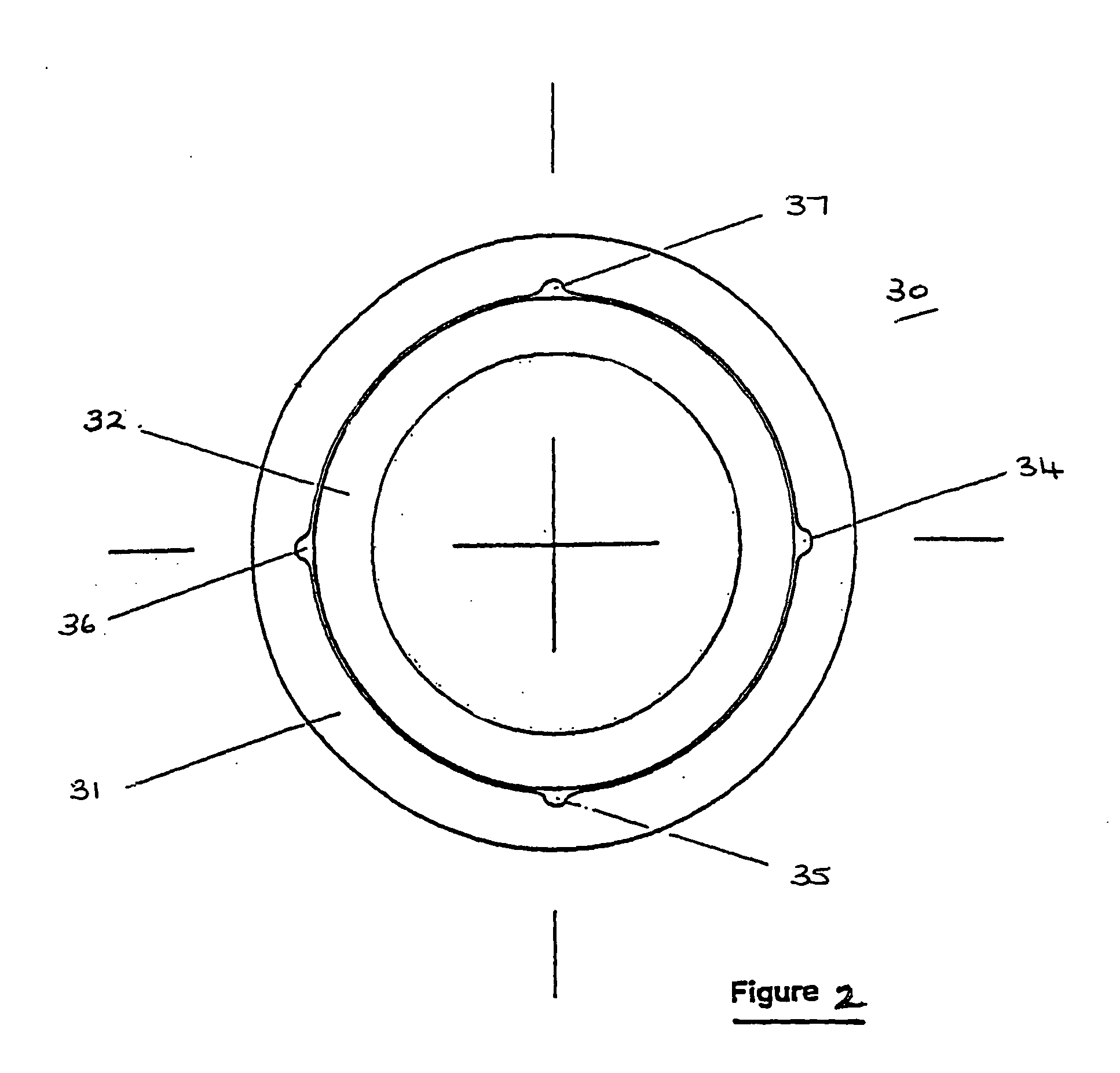Pipe
- Summary
- Abstract
- Description
- Claims
- Application Information
AI Technical Summary
Benefits of technology
Problems solved by technology
Method used
Image
Examples
example 1
[0127] If the primary pipe were 32 mm in diameter, the construction would be typically: [0128] Inner, fluoropolymer: e.g. modified PVDF=0.3 mm [0129] Bulk layer: e.g. PA12=0.3 mm [0130] Outer layer: e.g. modified PVDF=2.5 mm
[0131] The secondary would be an exact copy of this, fitting snugly on top, or could be a monolayer of fluoropolymer.
example 2
[0132] In this example, assuming a pipe diameter of 32 mm, the outer fluorinated layer is formed by fluorination of polyethylene. The construction would typically be:—[0133] an inner fluoropolymer barrier layer of modified PVDF=0.3 mm; [0134] an intermediate core layer of polyethylene=2.7 mm, the outer surface of which is fluorinated as described above.
example 3
[0135] Corresponds to Example 2 with a tie layer between the PVDF layer and the PE layer. The construction of this type would typically be:—[0136] an inner, fluoropolymer barrier layer of PVDF—0.3 mm [0137] a tie layer e.g. Adheflon from AtoFina—0.1 mm [0138] an intermediate, core layer of polyethylene=2.7 mm, the outer surface of which is fluorinated as described above.
PUM
| Property | Measurement | Unit |
|---|---|---|
| Flexibility | aaaaa | aaaaa |
| Permeability | aaaaa | aaaaa |
Abstract
Description
Claims
Application Information
 Login to View More
Login to View More - R&D
- Intellectual Property
- Life Sciences
- Materials
- Tech Scout
- Unparalleled Data Quality
- Higher Quality Content
- 60% Fewer Hallucinations
Browse by: Latest US Patents, China's latest patents, Technical Efficacy Thesaurus, Application Domain, Technology Topic, Popular Technical Reports.
© 2025 PatSnap. All rights reserved.Legal|Privacy policy|Modern Slavery Act Transparency Statement|Sitemap|About US| Contact US: help@patsnap.com



